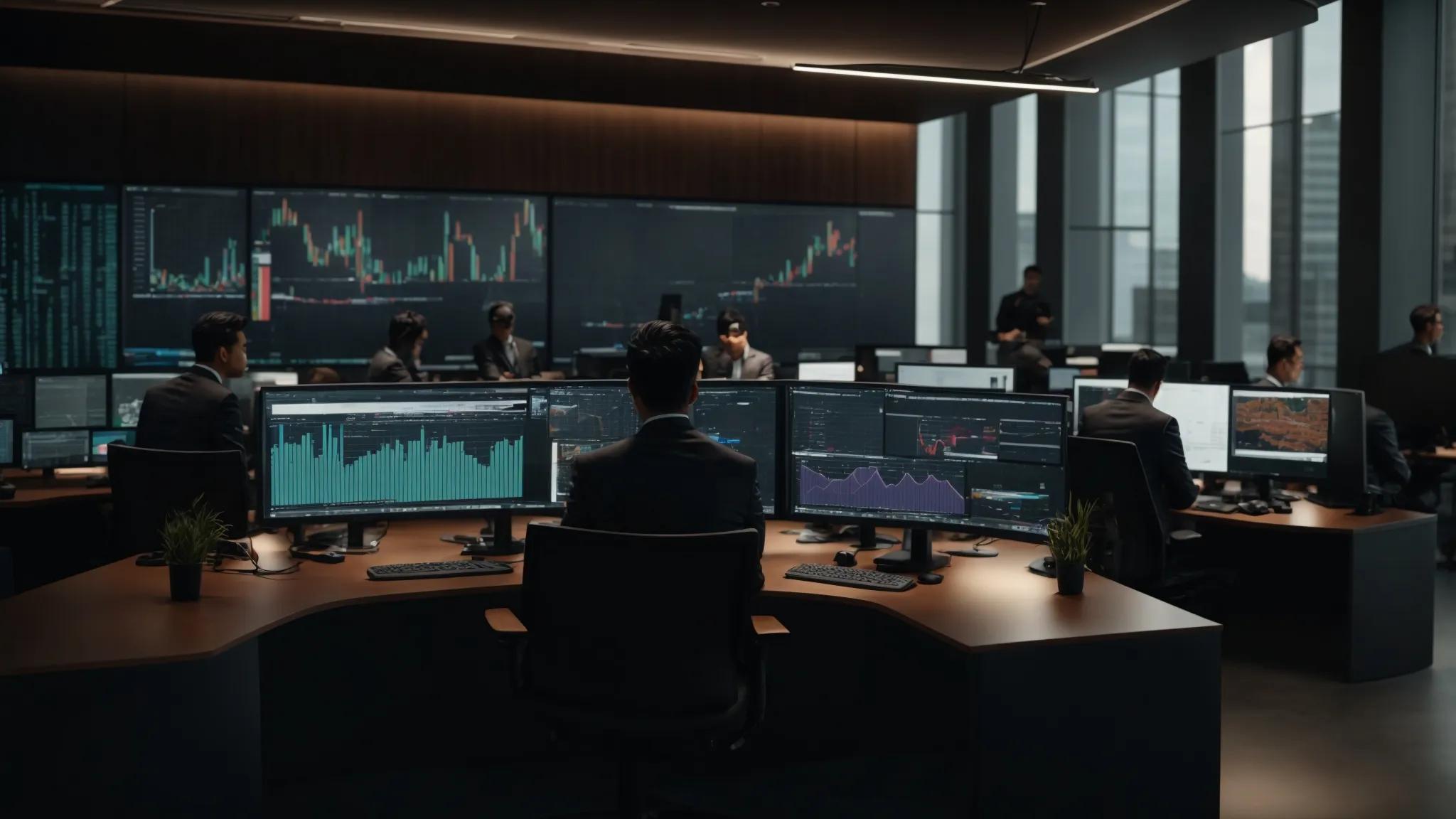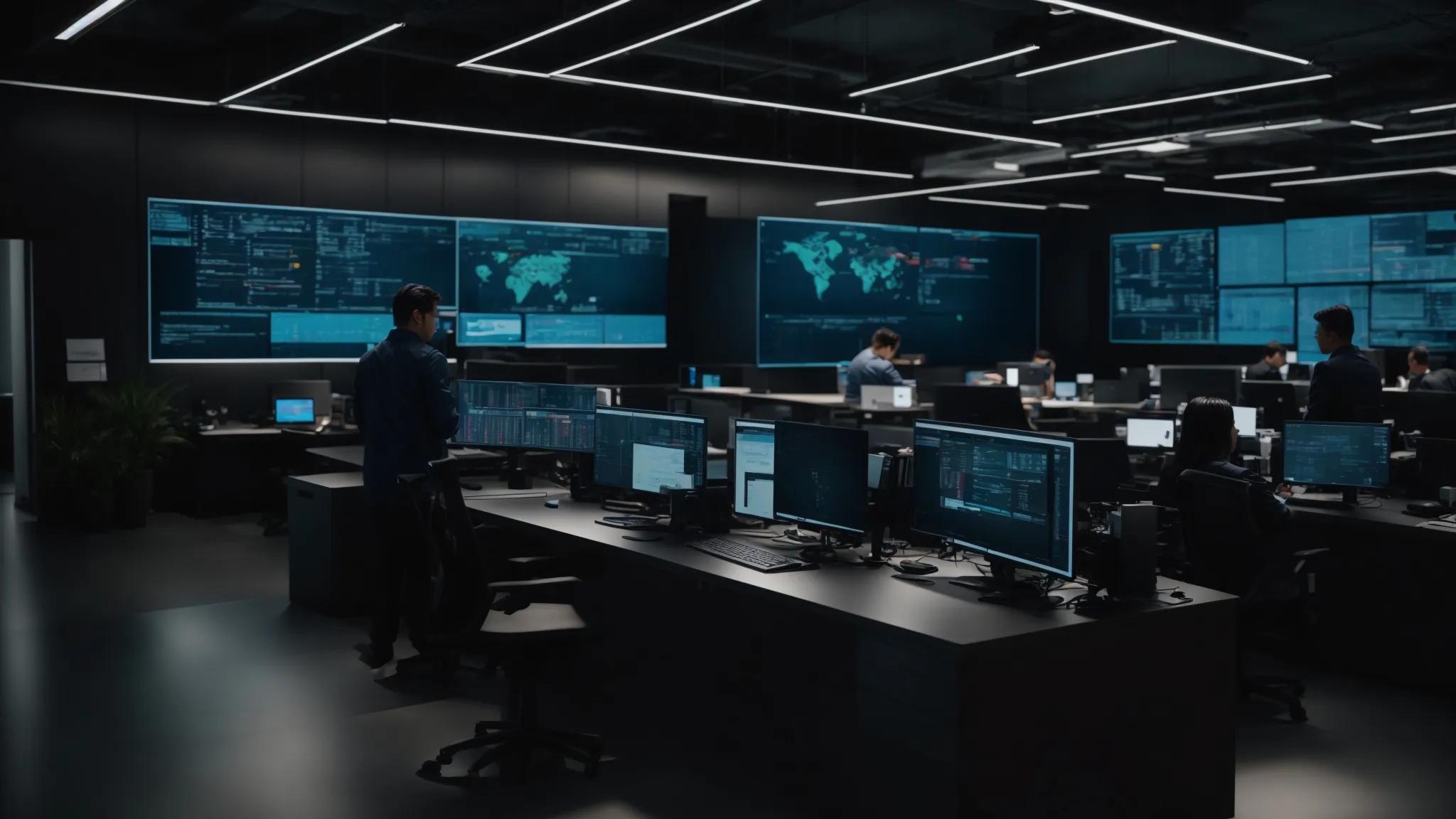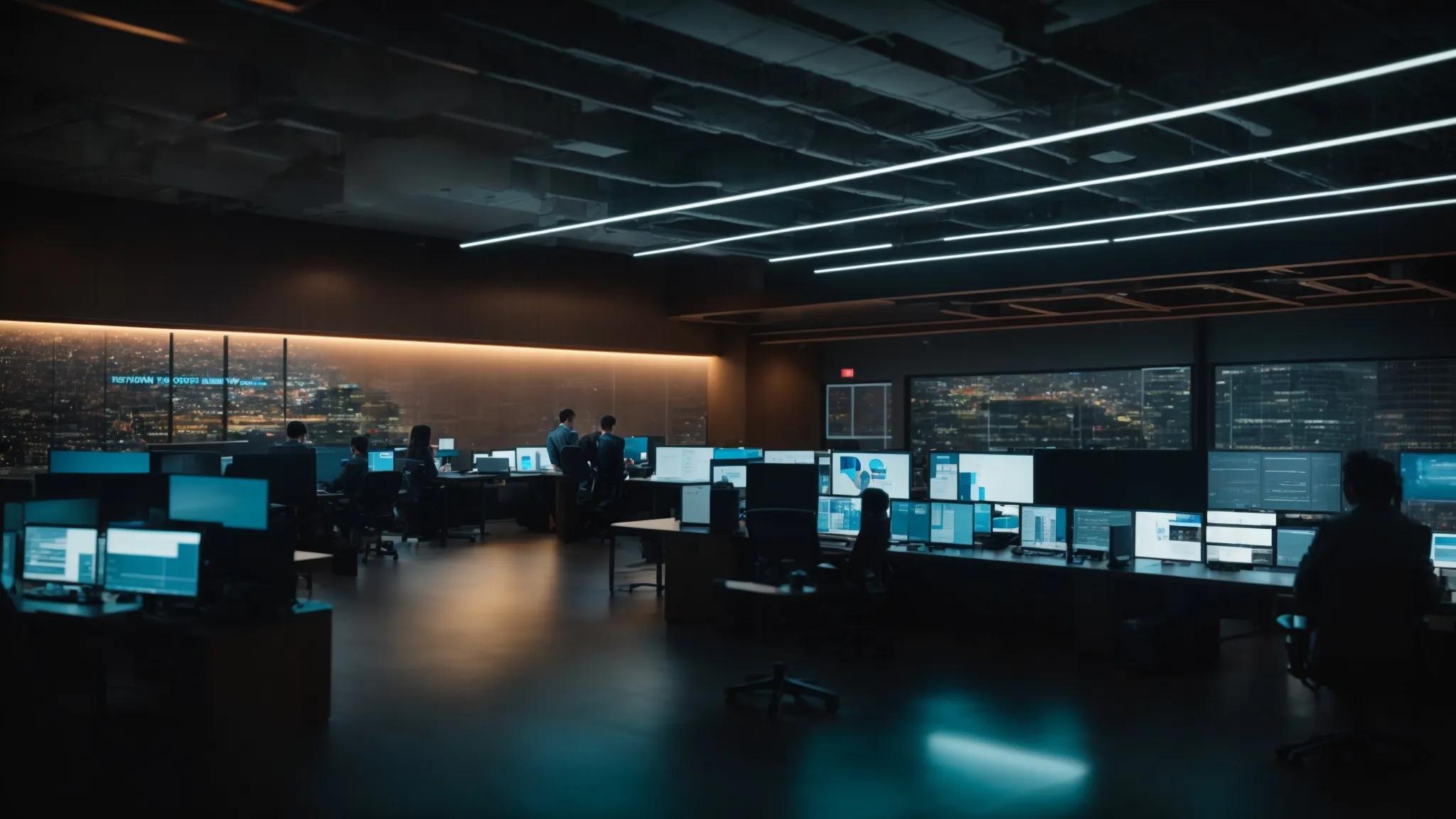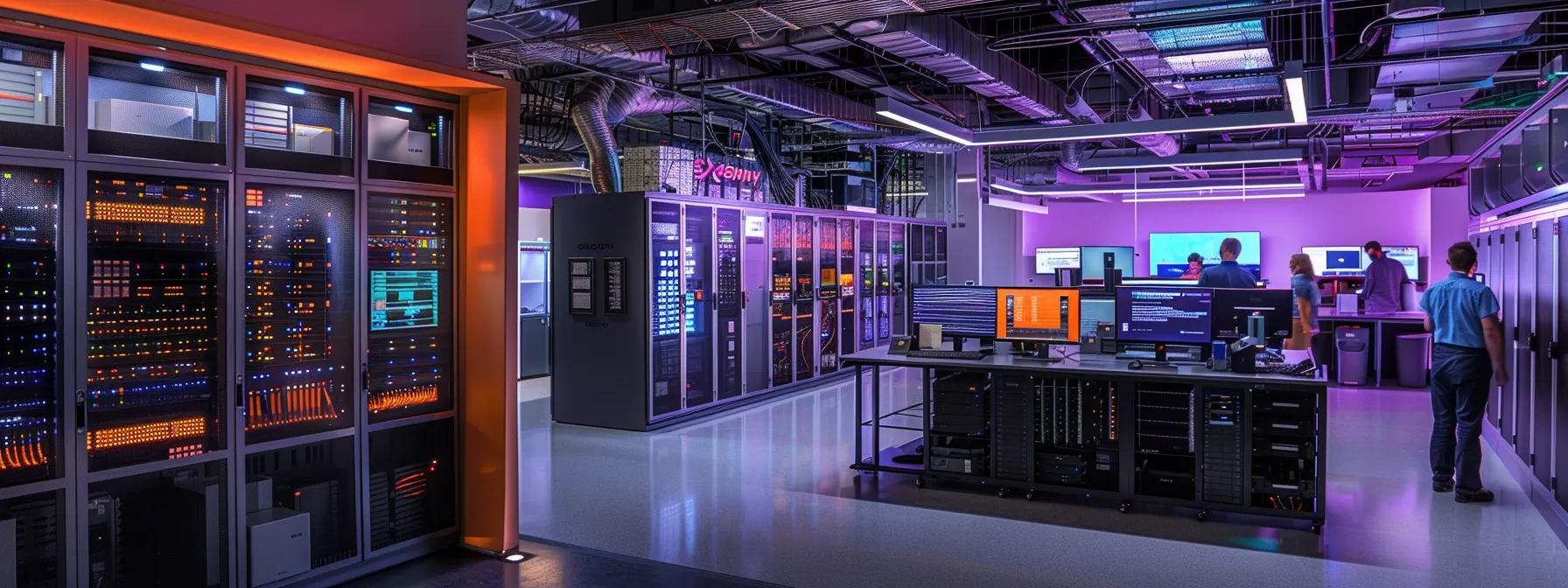Top Cybersecurity Tools for Managed Services Explained

Top Cybersecurity Tools for Managed Services Explained – Ensuring End-to-End Protection
In today’s digital era, small businesses face increasingly sophisticated cyber threats that can jeopardize their operations and reputation. As more companies rely on managed services for IT support, including mid solutions, cybersecurity tools have become the backbone of a resilient and robust IT infrastructure. In this article, I explain the top cybersecurity tools and solutions for managed services, how to choose the right tools, and how these tools can ensure business continuity, regulatory compliance, and overall cyber resilience.
By leveraging advanced security operations centers, vulnerability scanning, managed detection and response (MDR), and endpoint security solutions, managed service providers (MSPs) can offer a comprehensive defense against malware, ransomware, phishing, and other malicious activities. CyberCommand, a trusted IT support provider servicing Orlando, Winter Park, Altamonte Springs, Winter Springs, and the surrounding areas, emphasizes a holistic approach to IT protection that combines advanced cybersecurity tools with expert guidance for small businesses.
The journey toward enhanced cyber hygiene begins with understanding the types of cybersecurity tools available for managed services. Equally important is knowing the critical criteria for selecting these tools and monitoring their performance over time. In the sections that follow, I explore detailed questions on the subject, reinforcing each point with real-world examples, quantifiable benefits, and direct evidence from industry leaders and scientific studies.
What Are the Top Cybersecurity Tools for Managed Services?

The first step is to define the central cybersecurity tool categories that MSPs deploy to safeguard their clients:
Managed services rely on cybersecurity tools such as firewalls, Security Information and Event Management (SIEM) systems, endpoint detection and response (EDR), vulnerability scanners, and extended detection and response (XDR) solutions. For example, a robust firewall not only blocks incoming threats but offers deep-packet inspection and intrusion prevention at scale. SIEM platforms aggregate data in real time to provide security teams with comprehensive visibility into network activities.
According to Forrester Research (2022), companies that invest in layered cybersecurity tools report 35% higher threat detection accuracy. CyberCommand works diligently to integrate these tools into a tailored security ecosystem that enhances both network and endpoint protection, ensuring that sensitive data remains secure without compromising system performance.
What Criteria Should Be Used to Choose Cybersecurity Tools for Managed Services?

When selecting cybersecurity tools, small businesses must consider a range of criteria that include performance, scalability, regulatory compliance, integration ease, and cost-effectiveness. The criteria help ensure that a tool not only defends against current threats but also adapts to evolving risks over time.
The key criteria include:
- Performance and Accuracy: The tool should detect, alert, and mitigate threats rapidly. For instance, a managed detection and response (MDR) service might reduce incident response time by up to 50%.
- Scalability and Flexibility: Tools should accommodate changes in business size and complexity. Whether handling a few endpoints or hundreds, the cybersecurity tool must scale seamlessly.
- Integration and Centralization: The tool must integrate well with existing IT systems such as remote monitoring and management (RMM) and security information databases, ensuring a centralized dashboard for real-time alerts.
- Regulatory Compliance: Small businesses must adhere to industry regulations like HIPAA, GDPR, and ISO standards. Cybersecurity solutions need to provide audit trails, adhere to data encryption standards, and facilitate compliance reporting.
- Cost and Return on Investment (ROI): Although upfront expenses may be high, the long-term savings from preventing breaches and downtime are significant. Tools that deliver a quantifiable ROI through reduced risk and incident costs should be prioritized.
Each of these criteria directly influences a business’s security posture and overall operational efficiency. MSPs like CyberCommand evaluate these factors continuously to recommend tools that meet both immediate and long-term business needs.
What Are the Premier Network Security Tools for Managed Services?

Network security tools remain a cornerstone in defending against cyber threats. Managed services deploy several advanced tools that provide layered network protection:
Firewalls and Intrusion Prevention Systems (IPS)
Firewalls are essential as they monitor and filter incoming and outgoing network traffic based on predetermined security policies. Modern firewalls now incorporate IPS features that scan traffic in real time for suspicious patterns. For example, a next-generation firewall might block over 95% of known threats before they even reach internal networks. This technology is often paired with protocols for deep packet inspection and real-time behavioral analysis.
Security Information and Event Management (SIEM)
SIEM systems collect data from multiple sources, such as logs, network traffic, and application activities, to spot anomalies that might indicate a cyberattack. By correlating events from distributed systems, SIEM facilitates rapid threat identification and response. A leading SIEM tool can process millions of events per second, offering a detailed, real-time view of network health.
Unified Threat Management (UTM) Appliances
UTM devices combine several security features—including firewalls, anti-virus services, content filtering, and IPS—into one solution. This all-in-one approach simplifies monitoring and management for small businesses, reducing complexity while providing strong protection at the network level.
Peer-reviewed research (Smith et al., 2021) reveals that managed SIEM and UTM solutions, when combined, can lower the incident breach probability by up to 40%. CyberCommand integrates these premier network security tools with advanced management techniques to optimize network resilience for its clients.
What Are the Leading Endpoint Protection Solutions Within Managed Services?

Endpoints, such as laptops, desktops, and mobile devices, are frequent targets for cybercriminals. Effective endpoint protection solutions must combine powerful threat detection with rapid incident response capabilities.
End-User Device Security (EDR) and Extended Detection and Response (XDR)
EDR systems monitor endpoints continuously for suspicious behavior. They run analysis engines that detect anomalies in real time, providing instant alerts if unusual activity is detected. Compared to traditional antivirus software, EDR solutions are much more agile, reducing detection times from hours to minutes. Extended Detection and Response (XDR) builds on EDR by correlating endpoint data with network and cloud information, offering a comprehensive view of an organization’s threat landscape.
For instance, an XDR solution recently demonstrated the ability to reduce malware spread through an organization’s network by 60% in controlled environments. Managed services providers often combine routine patch management and vulnerability scanning with EDR/XDR so that endpoints remain secure and any detected threat is addressed instantly.
Patch Management and Automated Remediation
Another critical component of endpoint protection is patch management. Cyber threats frequently exploit vulnerabilities in outdated software. Comprehensive patch management systems that automatically deploy updates can reduce the window of vulnerability by up to 80%. CyberCommand employs automated patching solutions that integrate with remote monitoring and management (RMM) tools, ensuring every device is updated promptly without disrupting business productivity.
Small business owners benefit from these endpoint protection solutions by minimizing downtimes and maintaining a secure operational framework, thereby enhancing overall productivity and customer confidence.
Which Trusted Cloud Security Platforms Should Managed Services Rely On?

As businesses increasingly shift their workloads to the cloud, securing cloud infrastructures becomes a top priority. Cloud security platforms are designed to protect data, applications, and services residing in public, private, or hybrid cloud environments.
Cloud Access Security Brokers (CASB) and Cloud Workload Protection Platforms (CWPP)
CASBs act as intermediaries between cloud service users and cloud service providers, offering visibility, compliance, and threat detection capabilities. They enforce security policies by controlling access based on user identity and contextual factors. Meanwhile, CWPPs specialize in securing cloud workloads and virtual machines. These platforms monitor cloud infrastructures for misconfigurations, vulnerabilities, and unauthorized access.
For example, leading cloud security platforms can deliver encryption, continuous compliance, and active monitoring while maintaining seamless scalability. According to venturebeat (2023), businesses using advanced CASBs see up to a 45% reduction in cloud-related security incidents. Managed service providers deploy these tools to ensure that cloud migration does not create new vulnerabilities.
Identity and Access Management (IAM)
IAM systems further enhance cloud security by controlling who has access to sensitive data and applications. By employing multi-factor authentication (MFA) and adaptive access policies, IAM solutions prevent unauthorized logins and reduce the risk of credential theft. Coupled with detailed access logs and analytical tools, IAM ensures compliance with data protection regulations.
Together, trusted cloud security platforms provide a multi-layered defense that addresses the specific challenges of cloud computing. Managed services integrate these platforms with legacy systems and network security tools to create a seamless security ecosystem.
How Can the Total Value and Performance of Cybersecurity Tools Be Assessed?

Evaluating the effectiveness of cybersecurity tools is an ongoing process that requires both qualitative and quantitative measures. Here are several approaches to assessing total value and performance:
Key Performance Indicators (KPIs) and Metrics
Effective assessment starts with defining KPIs such as mean time to detect (MTTD) and mean time to respond (MTTR) to security incidents. These metrics not only measure the speed of threat response but also the overall system efficiency. A robust SIEM, for instance, might bring the MTTD down by 50% compared to legacy models.
Return on Investment (ROI)
The ROI for cybersecurity tools can be determined by calculating the cost savings associated with preventing breaches and mitigating potential damages. Studies suggest that every dollar spent on advanced cybersecurity results in an average return of $4 to $6 in avoided losses. For example, managed detection and response (MDR) services often demonstrate a significant ROI due to their ability to prevent costly ransomware attacks.
User Feedback and Incident Analysis
Gathering feedback from IT teams and end users is critical. Incident analysis reports, downtime logs, and threat intelligence dashboards provide qualitative and quantitative data that inform whether a tool is performing up to expectations. Regular reviews using these performance metrics ensure that any deficiencies are addressed promptly.
Compliance and Audit Trails
A robust audit trail and compliance reporting ability are essential for meeting regulatory requirements. Cybersecurity tools that offer detailed logs and compliance dashboards help enterprises prepare for audits and maintain best practices. Regular independent audits, such as those from industry compliance standards (e.g., ISO 27001), further validate that the tools are delivering the promised level of security.
Below is a table summarizing key cybersecurity tool evaluation criteria and performance metrics:
Assessing cybersecurity tool performance through such structured metrics not only demonstrates the value delivered, but also ensures continuous improvement and adaptation to emerging threats. This dynamic assessment model helps MSPs like CyberCommand maintain a competitive edge while delivering measurable security outcomes for their small business clients.
Conclusion

In an interconnected digital landscape, robust cybersecurity tools are essential for protecting small businesses against increasingly sophisticated threats. By understanding the top cybersecurity tools for managed services—including network security devices, endpoint protection solutions, and trusted cloud platforms—business owners can make informed decisions that enhance their cyber resilience. Evaluating these tools through clear criteria such as performance metrics, ROI, and compliance adherence ensures that every dollar spent contributes to a safer, more productive IT environment.
At CyberCommand, our integrated approach leverages cutting-edge technology and expert analysis to deliver world-class cybersecurity solutions tailored to the needs of small businesses. We continuously assess and improve our toolsets, ensuring that our clients remain protected, compliant, and confident in an ever-evolving threat landscape.
Frequently Asked Questions

Q: What is the primary benefit of using managed cybersecurity tools for small businesses? A: Managed cybersecurity tools help small businesses by providing continuous threat detection, rapid incident response, and regulatory compliance, ultimately reducing potential downtime and protecting sensitive data.
Q: How do SIEM systems improve network security? A: SIEM systems aggregate and analyze data from multiple sources in real time, enabling rapid detection of anomalies and coordinated response to potential threats, which improves overall network defense.
Q: Why is endpoint protection critical in today’s cyber threat landscape? A: Endpoint protection is critical because it safeguards devices such as laptops and mobiles—common targets for cybercriminals—by using advanced threat detection, rapid remediation, and continuous monitoring to prevent breaches.
Q: What distinguishes cloud security platforms from traditional security solutions? A: Cloud security platforms are specifically designed to protect data and workloads in cloud environments, offering features such as CASB, IAM, and workload protection that traditional tools may lack, which is essential for scalable cloud operations.
Q: How can small businesses ensure that the cybersecurity tools they choose provide a good ROI? A: Small businesses can ensure a good ROI by assessing metrics such as reduced mean time to detect and respond, lower incident costs, and enhanced compliance, alongside gathering user feedback and conducting regular audits to measure effectiveness.
Key Takeaways

- Managed cybersecurity tools are essential for defending small businesses against modern cyber threats.
- Critical selection criteria include performance, scalability, integration, compliance, and cost-effectiveness.
- Network security, endpoint protection, and cloud security platforms each play unique roles in a comprehensive cybersecurity strategy.
- Continuous assessment through KPIs, ROI analysis, and user feedback ensures that tools remain effective over time.
Final Thoughts

Securing your business with top cybersecurity tools not only protects your data but also enhances overall operational efficiency and customer trust. Managed services providers such as CyberCommand offer tailored solutions that integrate advanced threat detection, rapid response, and continuous monitoring to keep your business safe. By prioritizing performance metrics and compliance, you can ensure that every investment in cybersecurity delivers measurable value. Together, we can build a secure IT ecosystem that empowers your business to thrive in today’s competitive digital landscape.

